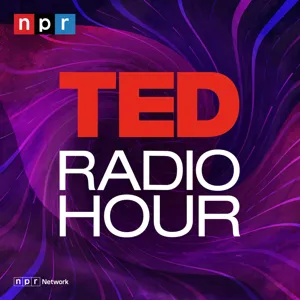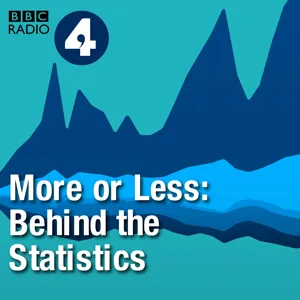Podcast Summary
Maddie Sofia leaving Shortwave, Emily Kwong to co-host: Maddie Sofia, current co-host of Shortwave, is leaving NPR and the show in the fall. Emily Kwong will take over as sole co-host. Maddie's departure comes due to the demands of producing a daily science show during the pandemic. She will be deeply missed but wished well on her new adventures.
There have been some significant changes at Shortwave. The good news is that Maddie Sofia and Emily Kwong will now be sharing hosting duties, with Maddie officially stepping into the co-host seat. The sad news is that Maddie will be leaving NPR and Shortwave in the fall. This transition comes after the demanding nature of producing a daily science show during a pandemic took a toll on Maddie and her family. Despite this, Maddie will be deeply missed by her colleagues and listeners, who have appreciated her guidance and dedication to bringing science to the airwaves. While it will be bittersweet to see her go, everyone is excited for her new adventures and will be cheering her on.
Monarch Butterflies' Multigenerational Migration: Monarch butterflies don't complete the full migration in their lifetime. Instead, their offspring continue the journey, emphasizing the significance of preserving milkweed habitats for their survival.
Monarch butterflies undertake an incredible multigenerational migration journey of up to 1,000 miles every year. Ecologist Sonia Alteizer, from the University of Georgia, explains that unlike many other migratory species, monarchs do not make the journey twice in their lifetime. Instead, it's their offspring who continue the journey the following year. These butterflies travel across international borders in search of milkweed plants, which are essential for their survival. This fascinating natural phenomenon highlights the importance of understanding and preserving the habitats that support such remarkable migrations. Tune in to the full episode for more insights into the world of monarch butterflies and their annual migration.
Monarch butterfly migration driven by food and overwintering: Monarch butterflies migrate for food and to overwinter, forming large clusters and repeating their lifecycle annually
The Monarch butterfly migration is driven primarily by the need for food, specifically milkweed, and the desire to overwinter in the Sierra Madre Mountains. During their migration, they form densely packed clusters that can contain millions of butterflies, which spend the winter in a state similar to hibernation. As the weather warms in the spring, the clusters disperse and the butterflies head north to lay their eggs on milkweed. The lifecycle repeats, with multiple generations born in the northern United States and Canada before the final generation makes the journey south to overwinter. Monarch butterflies have to be in a special physiological state to make the migration, and they rely on specific environmental cues to know when it's time to move. The migration is a remarkable display of nature, with clusters of butterflies creating a breathtaking sight as they take to the sky.
Monarch Butterflies and Human Food Production: Monarch butterflies face declining populations due to habitat loss caused by shifting agricultural practices, impacting their food source milkweed, and indirectly affecting human food production. It's crucial to support milkweed growth in agricultural areas to preserve this iconic species and its ecological role.
The survival of monarch butterflies relies on their ability to build up fat reserves during fall and winter, which they use for migration and overwintering. However, monarch populations are declining due to various threats including habitat loss caused by shifting agricultural practices. Milkweed, a crucial resource for monarch reproduction, is often found in agricultural areas but is being lost due to changes in farming methods. Therefore, human food production indirectly impacts the monarch population. The loss of monarchs, one of the Earth's last great migrations, would have significant ecological consequences and cannot be easily replaced. The causes of monarch decline include climate change, drought, deforestation, illegal logging, and car strikes. The decline in monarch populations is alarming, with an estimated 90% decrease in recent years. This is equivalent to losing every person living in the United States except for those in Ohio and Florida. It's important to raise awareness of the link between monarch well-being and human food production, and to consider ways to support milkweed growth in agricultural areas to help preserve this iconic species and the vital role it plays in ecosystems.
Monarch butterflies and genetically modified crops: Monarch butterfly populations have declined due to loss of habitat from genetically modified crops. Consumers can help by buying non-GMO food, but efforts to plant native milkweed and support sustainable farming practices are crucial for long-term conservation.
The widespread use of genetically modified crops, particularly those resistant to herbicides like Roundup, has led to a decline in monarch butterfly populations. These crops, while not inherently harmful, have contributed to the loss of biodiversity in agricultural areas by killing off milkweeds and other plants that monarchs rely on for food and habitat. While consumers can make a difference by buying non-GMO food, it may be too late to completely reverse the trend. Instead, efforts to help monarchs can include planting native milkweed and other nectar plants, as well as supporting sustainable farming practices and habitat restoration. It's important to remember that monarchs are just one part of complex ecosystems, and efforts to help them will benefit many other species as well.
Monarch Butterflies: More Than Just Long-Distance Migrators: Monarch butterflies exist as residents in various regions and exhibit different behaviors. Human activities threaten their populations, requiring international cooperation for conservation.
Monarch butterflies, despite being known for their long-distance migrations, also exist as resident populations in various parts of the world, including Central and South America, the Caribbean Islands, and more recently, the Pacific Islands and even Europe. These butterflies exhibit different behaviors depending on their environments, which is fascinating to scientists. However, human activities continue to pose threats to their populations, making conservation efforts essential. One of the challenges in protecting migratory species like monarchs is that they don't recognize or respect geopolitical boundaries. Therefore, international cooperation is crucial for their preservation. Sonya Alteizer, an ecologist at the University of Georgia, emphasizes the importance of understanding and addressing the causes of monarch population declines. To learn more about her research and ways to help monarch butterflies, visit ted.npr.org. Remember, the ability to move is not just a part of their life; it's essential for their persistence.






